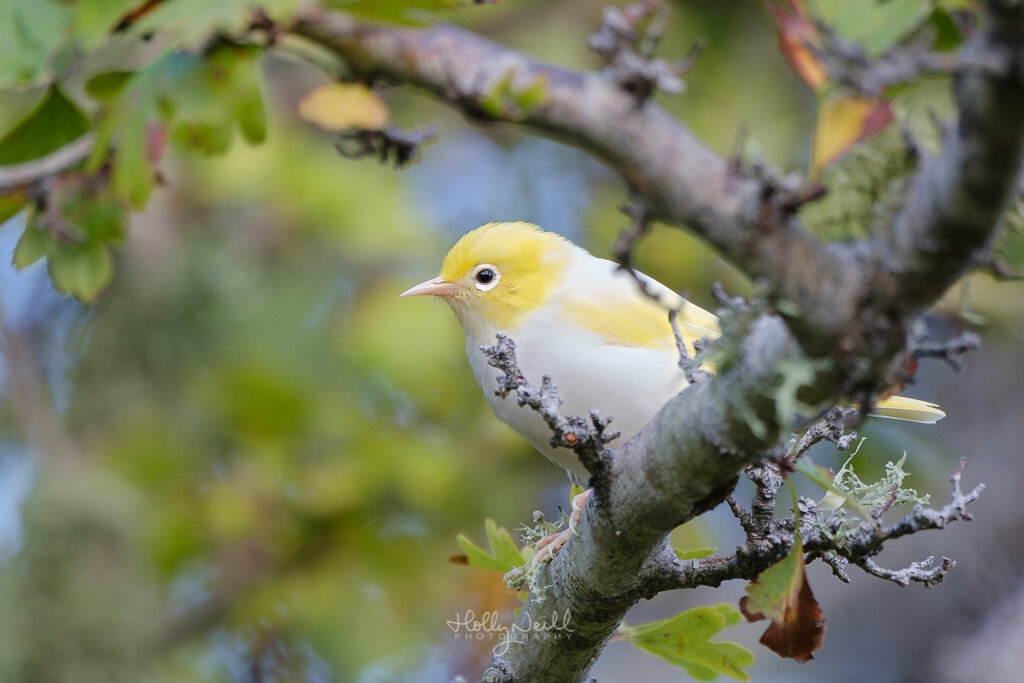Kia ora! Today I had one of the most exciting native bird encounters I’ve ever had, and thankfully I had my camera on me!
With the whole country in a lockdown because of COVID-19, I’ve been going for short early morning walks around the block each day and have treating them as my ‘commute’ to work, which is now in my lounge.
Last week, I spotted what I thought was a leucistic tauhou (waxeye) from a distance, but I didn’t have my camera on me so I couldn’t be 100% sure. I did wonder for a moment if it was a rogue canary, trying to assimilate with wild native birds which would have been a bold move. Since that first sighting, I’ve been carrying my camera on each walk just in case I spot that gloriously rare bird again. Today, I got super lucky!
For more info on what the differences between leucism and albinism are, scroll to the bottom of this blog.
It goes to show that talking a walk around the block and paying attention to the nature around you can be hugely rewarding. I definitely recommend taking a moment to appreciate what’s around you in your own neighbourhood, because you never know what might be hanging out in a tree 500m from home!
A leucistic tauhou (waxeye). I was FIZZING to get photos of this extremely rare, vibrant bird. I genuinely skipped. In public.
For your comparison, here is a tauhou that has the regular colouring. Note the olive-green and mid-grey colouring. The white/silver ring around its eye is why many people call them silvereyes.
Their Te Reo Māori name, tauhou, means “stranger” or more literally, “new arrival” as it is thought they self-introduced from Australia in the 1800s. Their first recorded sighting in Aotearoa was in 1832, according to DOC.
A regularly coloured tauhou
Here’s a bunch more photos of this super rare, brightly coloured cutie. Wellington has plenty of native birds around the place thanks to Zealandia and awesome backyard trapping efforts, allowing groovy birds like this to make it to adulthood!
Despite looking considerably different from the rest of its flock, this wee tauhou was very much a welcome member of the flock I saw it feeding on berries with. It even looked as though it had its own mate, as I saw it get affectionately groomed by another tauhou. Cuteness overload. This was great to see, as sometimes leucistic birds are treated as ‘outcasts’ by their own species. Their light, bright pigmentation can also mean they are much more vulnerable to predation. This isn’t particularly surprising, because this bird truly glowed in comparison to its fellow bird pals! Happy to see that this particular leucistic bird seems to be thriving.
Other leucistic native birds
There have been several recent sightings of other native birds that have leucism. Sea bird scientist extraordinaire, Edin Whitehead, captured incredible photos of a leucistic pīwakawaka last year. You can watch a video about her encounter - it’s well worth watching.
A leucistic tūī was spotted in Taumaranui in 2017, which was totally white except for its head remaining black.
What is leucism?
The Spruce defines leucism as:
“Leucism, or leukism, is an abnormal plumage condition caused by a genetic mutation that prevents pigment, particularly melanin, from being properly deposited on a bird’s feathers.”
More info on that here.
How is leucism different to albinism?
Again, The Spruce defines that as “Leucism affects only the bird’s feathers, and typically only those with melanin pigment, usually dark feathers. A leucistic bird with different colors may show some colors brightly, especially red, orange, or yellow, while feathers that should be brown or black are instead pale or white. Some leucistic birds, however, can lose all the pigment in their feathers and may appear pure white.
Albinism, on the other hand, affects all the pigments, and albino birds show no color whatsoever in their feathers. Furthermore, an albino mutation also affects the bird’s other pigments in the skin and eyes, and albino birds show pale pink or reddish eyes, legs, feet, and a pale bill. Leucistic birds, on the other hand, often have normally colored eyes, legs, feet, and bills.”







